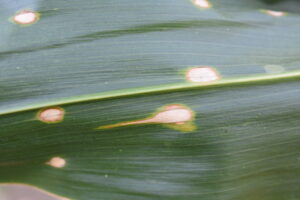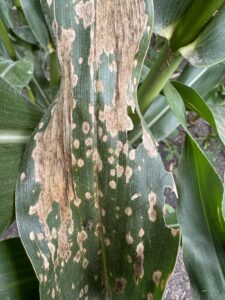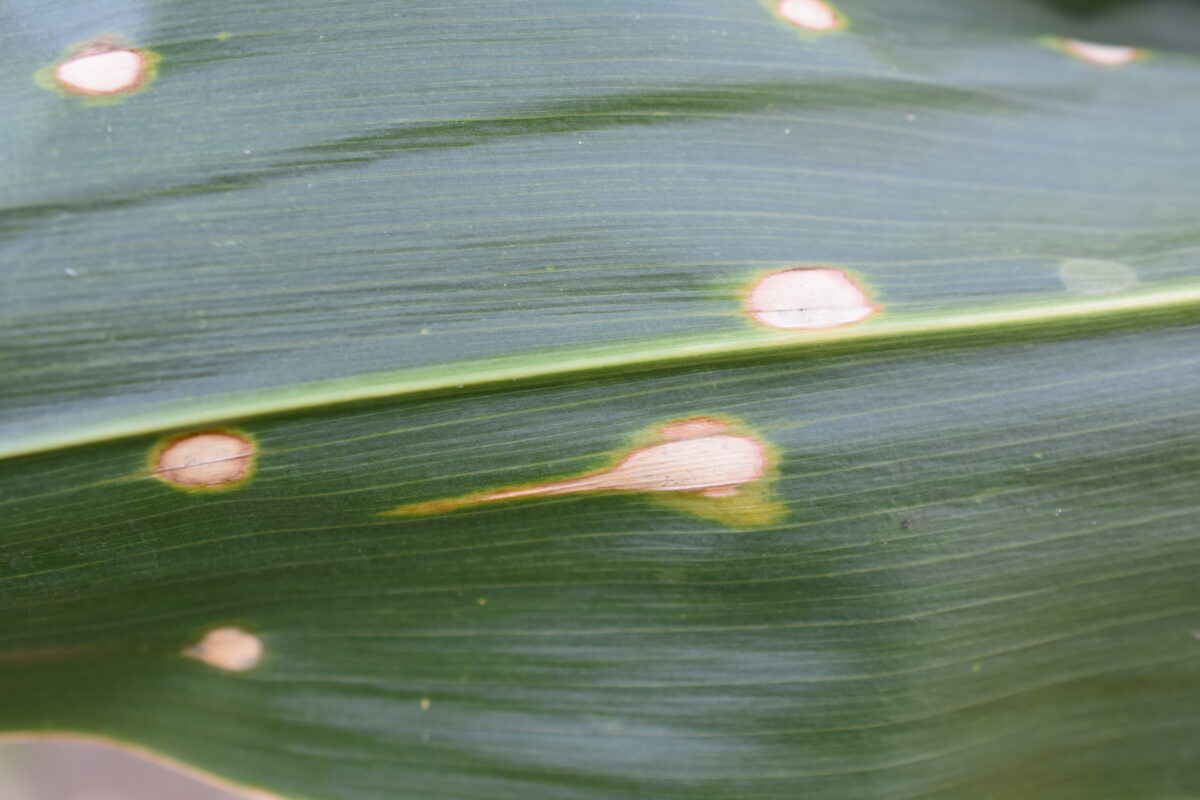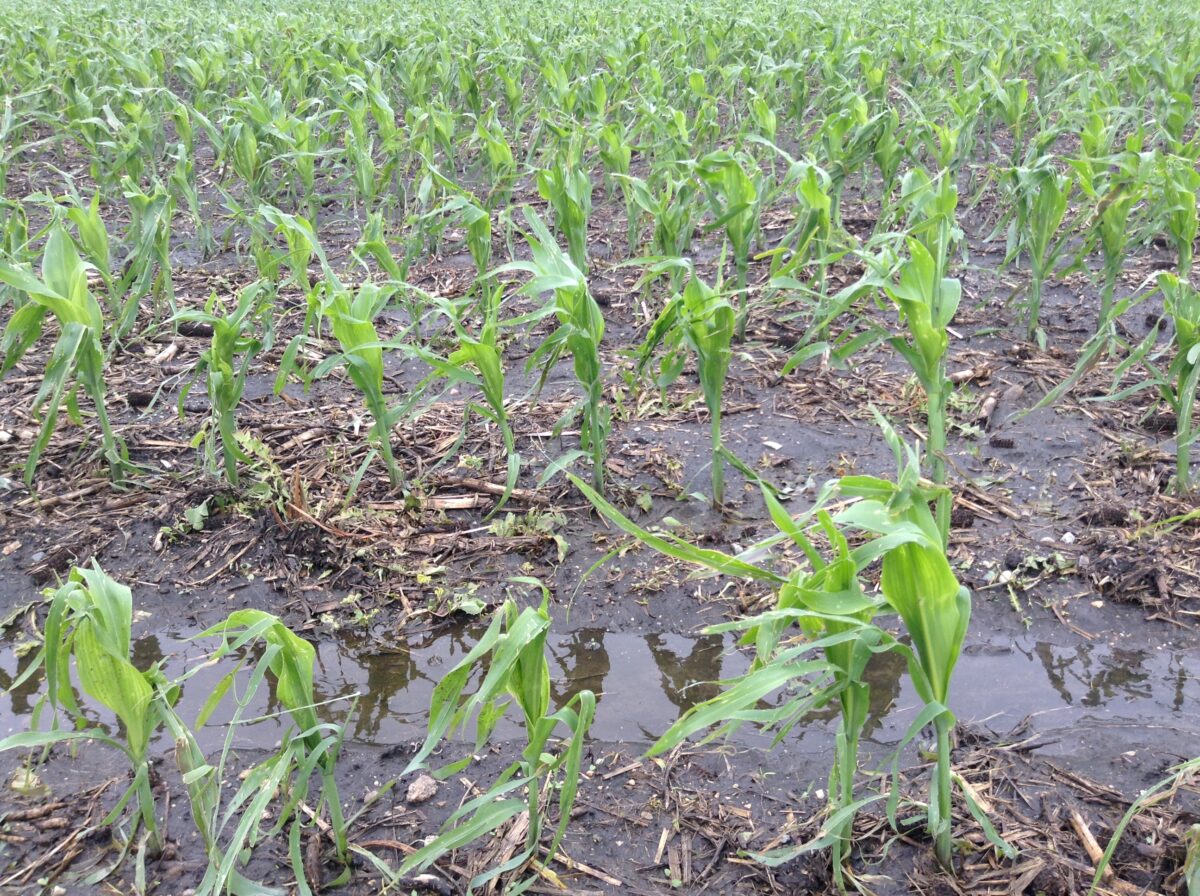Holcus Spot
What is holcus spot?

Holcus spot on corn leaf
A bacterial leaf disease affecting mainly corn crops, though it can overwinter in both monocot and dicot species. Holcus spot begins as a water-soaked spot on lower leaves and develops into small (1/4 to 1/8 “ in diameter), circular to elliptical, white to tan lesions. Lesions commonly develop a brown margin and sometimes a light halo is visible around the lesions. In severe infections, holcus spot can cause significant lesions on plant leaves, though it is more common to have minor spotting, covering less than 5% of a single leaf’s surface.
Conditions for Development
Holcus infections follow typical Manitoba spring conditions. This includes high winds and heavy rains, followed by extended moisture and warm summer temperatures (24C – 30C). The bacteria is interesting because it infects the leaf via wounding, but it doesn’t need a wound for development. The pathogen also does not spread from an infected leaf to a healthy leaf, as in many other leaf diseases.
Disease Management
The holcus spot pathogen lives and overwinters on crop residues. Best management practices to gain control of the pathogen are crop rotation and tillage. As a bacterial pathogen, fungicides will have no effect on the disease.
Fortunately, holcus spot affects a very small area of each infected leaf and photosynthesis of the green leaf material is still very effective. This is a concern in more disruptive leaf diseases or killing frosts that affect large areas of each leaf and photosynthesis is allocated to a small area or none at all. As a result of the small area affected, yield is not penalized and holcus spot is more of an aesthetic disease than a concern for farmers.
Don’t get confused…
Holcus spot infections are relatively uncommon. It is easy to see them and be unsure of what it means because lesions are most often minute and don’t draw attention.
In the rare occasion that the disease does grab attention, lesions can be confused with drift of a contact herbicide, like diquat (image below), or fertilizer burn. Key tips to determine if it could be fertilizer injury would be to ask the farmer or applicator if anything was applied recently or in the sprayer tank. If there is a possibility of herbicide drift, there will be a clear pattern in the area that would have gotten “hit”. The lesions would likely be worst along the outer rows and lessen the further into the field you look. Early in the season, injury would not grow with the plant and new leaves would be injury-free.

Diquat drift on corn leaf


